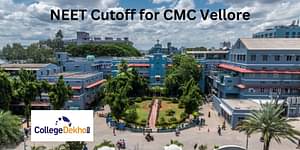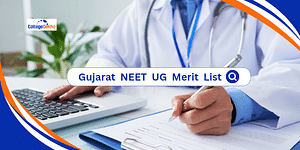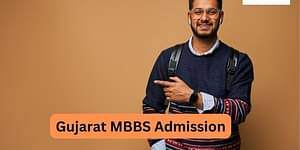Orthopaedics
Orthopaedics Courses Overview
Orthopaedics courses can be pursued after completing higher secondary school. Certificate and diploma degrees in Orthopaedics courses require applicants to submit high school passing certificates with a minimum of 60% aggregate marks. Along with that, they must also have studied physics, chemistry, and biology as the core subjects. The Orthopaedics course imparts knowledge about musculoskeletal structure, joints, and body movements.
Orthopaedics courses are available at different academic levels like certificates, diplomas, bachelor's degrees, master's degrees, and doctorates. For completing master's or higher degrees in Orthopaedics courses, students must complete an MBBS degree. After that, applicants have to pass entrance tests like NEET-PG, CUCET, INI CET, etc. for admission to postgraduate or doctorate in Orthopaedics courses. Orthopaedics courses are available in both online and offline modes.
There are many online platforms that offer Certificates and Diploma degrees in Orthopaedics courses like Coursera, Edx, Udemy, etc. Many top institutions in India grant admission to Orthopaedics courses such as All India Institute of Medical Sciences (AIIMS), St. John’s Medical College, CMC Vellore, Kasturba Medical College, and MS Ramaiah Medical College. The average course fee range for Orthopaedics courses lies between 3,000 to 18,00,000 INR. Professionals can work as Medical practitioners, Orthopaedics, and Therapists, after obtaining a degree in Orthopaedics courses.
Table of Contents
- Orthopaedics Courses Overview
- Orthopaedics Course Highlights
- Why Study Orthopaedics Course?
- Entrance Exams for Orthopaedics Course
- Eligibility Criteria for Orthopaedics Course
- Admission Process for Orthopaedics Course
- Colleges in India Offering Orthopaedics Course
- Foreign Colleges Offering Orthopaedics Course
- Course Fee for Orthopaedics Course
- Core Subjects Under Orthopaedics Course
- Curriculum for Orthopaedics Course
- Best Books for Orthopaedics Course
- Specializations Under Orthopaedics Course
- Career and Salary After Orthopaedics Course
- Top Recruiting Agencies for Orthopaedics Course
- Skills for Orthopaedics Course
- FAQs about Orthopaedics
Orthopaedics Course Highlights
Here are some quick highlights on the Orthopaedics Courses:
Details |
Specifications |
|---|---|
|
Course name |
Orthopaedics Courses |
|
Course Types with Time Duration |
Certificate - 3 months to 1-year Diploma - 6 months to 1-year Postgraduate - 2 years Doctorate- 1 to 3 years |
|
Mode of study |
Offline, online, distance |
|
Examination Pattern |
Semester |
|
Course fee |
3,000 to 18,00,000 INR |
|
Duration |
3 months to 3 years |
|
Job Profiles |
Medical Practitioners, Orthopaedics, Therapists |
|
Top Recruiters |
Apollo, Columbia Asia, AIIMS |
Why Study Orthopaedics Course?
Several positive reasons are there for students to take up Orthopaedics courses for their higher studies. Some of the prominent points are mentioned below:
-
There are ample job opportunities for all the students who have completed their degree in Orthopaedics courses.
-
They can find employment in both the private and public sectors of the country.
-
Graduates are able to stay updated with the newest developments and technological advancements in the Orthopaedics field.
-
There are several research grants and fellowships that are included with Orthopaedics courses.
-
The scope for Orthopaedics courses graduates is increasing every day.
-
Since this job involves precision, aspirants who are intellectual and perfectionists may find professional satisfaction.
Entrance Exams for Orthopaedics Course
For candidates who wish to study postgraduate or doctorate in Orthopaedics courses, it is compulsory to sit for entrance tests that are held every year. Some of the popular entrance exams are:
Exam |
Full Form |
Full Marks |
Details |
|---|---|---|---|
|
INI CET |
Institute of National Importance Combined Entrance Test |
200 |
|
|
NEET-PG |
National Eligibility cum Entrance Test (Postgraduate) |
800 |
|
|
CUCET |
Central University Common Entrance Test |
200 |
|
|
JUET |
Jammu University Entrance Test |
150 |
|
Eligibility Criteria for Orthopaedics Course
The eligibility criteria for Orthopaedics courses mainly depend on the academic level of the degree that students are opting for. The division of eligibility criteria for each course level is presented below:
Course Level |
Duration |
|---|---|
|
Certificate in Orthopaedics Courses |
Passing certificate of higher secondary degree in science stream with minimum 60% aggregate marks. |
|
Diploma in Orthopaedics Courses |
High School passing certificate with 60% marks in the science stream |
|
Bachelor’s Degree in Orthopaedics Courses |
|
|
Master’s Degree in Orthopaedics Courses |
|
|
Doctorate in Orthopaedics Courses |
|
Admission Process for Orthopaedics Course
The admission process for Orthopaedics courses is simple. It largely depends on the degree level you are choosing.
-
While enrolling in a certificate program in Orthopaedics courses, students must present their higher secondary passing certificate and other official documents.
-
Students who wish to take admission to Postgraduate and Doctorate programs in Cardiology courses must sit for entrance exams like NEET-PG, INI CET, etc. Candidates are ranked according to their marks obtained in the exam.
-
Their ranking decides the colleges they can get admission to.
-
Eligible students are then called for counselling rounds where they are asked about their preferred colleges.
-
Before final admission, all the applicants are asked to attend interview rounds with the colleges.
-
Many colleges also ask their applicants to participate in group discussions.
Colleges in India Offering Orthopaedics Course
The top colleges in India offering degree courses in Neurology Courses are:
Certificate in Orthopaedics Courses
College/University |
Location |
|---|---|
|
IAPEN |
Maharashtra |
|
Royale Institute |
Puducherry |
|
Maharashtra |
|
|
National Institute of Health Science and Research |
New Delhi |
|
Dr. Babasaheb Ambedkar Open University |
Gujarat |
|
Sigma College |
Gujarat |
|
Apollo Hospital |
Hyderabad |
Online education platforms that offer Orthopaedics courses are:
Platform |
Set-up |
|---|---|
|
Udemy |
Online |
|
Coursera |
Online |
|
Swayam |
Online |
|
Edx |
Online |
|
Futurelearn |
Online |
Diploma in Orthopaedics Course
College/University |
Location |
|---|---|
|
West Bengal |
|
|
Bihar |
|
|
Medical College |
West Bengal |
|
Government Medical College |
Kerala |
|
Gujarat |
|
|
Shri Jagdishprasad Jhabarmal Tibrewala University |
Rajasthan |
|
Uttar Pradesh |
|
|
Government College of Nursing |
Kerala |
Bachelor’s Degree in Orthopaedics Course
College/University |
Location |
|---|---|
|
Karnataka |
|
|
Jawaharlal Institute of Postgraduate Medical Education and Research |
Puducherry |
|
Uttarakhand |
|
|
Medical College |
West Bengal |
|
Dr. NTE Institute of Health Sciences |
Andhra Pradesh |
|
Government Medical College |
Kerala |
|
Andhra Pradesh |
Master's Degree in Orthopaedics Course
College/University |
Location |
|---|---|
|
All India Institute of Medical Science |
Delhi |
|
Kolkata Medical College |
West Bengal |
|
NIMS College of Paramedical Technology |
Rajasthan |
|
Karnataka |
|
|
Vivekanandha Allied Health Science |
Tamil Nadu |
|
NIMT |
Noida |
|
CMC Ludhiana |
Punjab |
|
Delhi |
|
|
Christian Medical College |
Tamil Nadu |
|
Armed Forces Medical College |
Maharashtra |
Doctorate in Orthopaedics Course
College Name |
Location |
|---|---|
|
Institute of Post-Graduate Medical Education Research |
West Bengal |
|
Goa Medical College |
Maharashtra |
|
Delhi |
|
|
Calcutta Medical College |
West Bengal |
|
Institute of Medical Sciences Banaras University |
Uttar Pradesh |
|
Grant Medical College |
Maharashtra |
|
St. Johns Medical College |
Karnataka |
|
Maulana Azad Medical College |
Delhi |
|
Christian Medical College |
Tamil Nadu |
|
Armed Forces Medical College |
Maharashtra |
Foreign Colleges Offering Orthopaedics Course
There are many in foreign countries that offer orthopaedics courses to students. Some of the top colleges are:
College/University |
Location |
|---|---|
|
University of Missouri |
United States of America |
|
Mohawk College |
Canada |
|
Keele University |
United Kingdom |
|
University of Nottingham |
United Kingdom |
|
University of Birmingham |
United Kingdom |
|
George Washington University |
United States of America |
|
Western Sydney University |
Australia |
|
Harvard University |
United States of America |
|
Newcastle University |
United Kingdom |
|
Western Sydney University |
Australia |
Course Fee for Orthopaedics Course
Course Level |
Average Fees Range |
|---|---|
|
Certificate |
3000 to 30,000 INR |
|
Diploma |
20,000 to 80,000 INR |
|
Bachelor’s |
50,000 to 1,00,000 INR |
|
Master’s |
2,00,000 to 9,00,000 INR |
|
Doctorate |
10,00,000 to 18,00,000 INR |
Core Subjects Under Orthopaedics Course
Subjects |
Description |
|---|---|
|
Physical Anthropology |
The main subject matter of this discipline is the study of the genetics and physical and biological aspects of humans throughout history. It also investigates the relationship of humans with other animals in a biological and anatomical sense. |
|
Applied Anatomy |
It studies the structure of the human body. This knowledge helps the professionals in treatment purposes. |
|
Applied Radiology |
This subject illustrates the use of radiology in taking medical images and focusing on understanding the musculoskeletal structure of living organisms. |
|
Applied Dental Materials |
In this subject, candidates learn about the different techniques involved in diagnosing dental problems. |
|
Nutrition |
This subject covers the important topic of how to have a healthy lifestyle by proper intake of food. This also covers preventive measures for several diseases. |
|
Infections and Tumors |
There are several diseases that occur in the bones and muscles of the body. In this subject, students elaborately learn about infections and tumors, and also the causes, and proper diagnosis. |
|
Traumatology or General Orthopaedics |
As the name suggests, this concept covers topics on surgical ways to diagnose several diseases occurring in the Musco-skeleton, joints, and knees. |
|
Spine Anomaly |
All the disorders that affect the spinal cord or the vertebrate of living organisms are discussed under this discipline. |
|
Study of Biostatics |
This subject is a combination of statistics and biology. It enables the students to know the application of statistical methods in conducting biological experiments and collecting data. These data are also analyzed using statistical methods. |
|
Imaging (foot/ankle) |
The use of medical imaging in the treatment of disorders or fractures in the ankle and foot region is discussed under this subject. |
|
Amputation |
It is the process of removing limbs using surgical methods in order to control any diseases or pain in the region. |
Curriculum for Orthopaedics Course
The curriculum structure for Orthopaedics Courses is:
Certificate in Orthopaedics Course
It takes 3 months to 6 months to complete a certification degree in Orthopaedics courses. These courses are mainly taken up by working professionals to upskill their knowledge. A few common subjects are:
- Orthoses in Orthopaedics Rehabilitation
- Hand and Wrist Injuries
- Shoulder Injuries
- Amputee Rehabilitation
- Rehabilitation Counseling
Diploma in Orthopaedics Course
Many vital subjects are covered under Diploma in Orthopaedics courses. The duration of diploma degrees is from 6 months to 1 year. Some of the common subjects are:
- Basic Sciences related to Locomotor System
- Surgical Pathology related to Bones, cartilage, Muscle, collagen, and Nerves
- Congenital affection
- General principles of surgery and Traumatology
- Orthopaedics diseases
- Orthopaedics Radiology
- Biomechanics
- General mechanical skills
- Functional anatomy
Bachelor’s Degree in Orthopaedics Course
The 3-year bachelor's degree in Orthopaedics courses is divided into 6 semesters. The division is presented below:
Semester 1 |
Semester 2 |
Semester 3 |
Semester 4 |
Semester 5 |
Semester 6 |
|---|---|---|---|---|---|
|
Infections |
Surgical Techniques and Approaches |
Excision of Benign Lessons |
Internal Fixation of Minor Fractures with K-Wires |
Clinical Diagnosis |
Regional Orthopaedics |
|
Operative Orthopaedics |
Microsurgery |
Arthrodesis |
Skull Tongs Application |
Spine |
Arthroplasty, Amputations |
|
Imaging the Orthopaedics |
Other Non-traumatic Disorders |
Mastering Plastering Techniques |
Practical Works |
The Foot and Ankles |
Sports Medicine |
|
Congenital |
Tumors |
Closed Reduction of Fractures |
Dislocations |
Fractures and Dislocations |
|
|
Peripheral Nerve Injuries |
Anomalies |
External Fixator Application |
Debridement of Open Fractures |
Master's Degree in Orthopaedics Course
Students who want to acquire in-depth knowledge in Orthopaedics courses can pursue a master degree. Some of the core subjects are:
- Basic Sciences Related to Locomotors framework
- Development, histology of bone, ligament, collagen, muscles, and nerves
- Physiology of bone, cartilage, muscle, and nerve
- Affections of the Congenital
- Surgical pathology involving bones, skin, collagen, and nerve
- tumors, and meek conditions
- Metabolic bone ailment
- Bone infections-Acute and Chronic
- Congenital deformities and formative states
- Diseases of joints
- Tumors of Bones
- Orthopaedics Neurology including spinal Bifida, Poliomyelitis, and cerebral paralysis
- Diseases of muscle, sinewy tissue, and vessels
- Orthopaedics Radiology Amputation and disarticulation physiotherapy
- Wound recuperating
- Rehabilitation after bone and joint wounds
- Acute injury mind and quick examination of harmed
- Injury to the head, confront, trunk, stomach area, vessels, and nerves
Doctorate in Orthopaedics Course
This three-year doctorate degree in Orthopaedics courses is for students who wish to pursue their research degree in the relevant field. Though students have the option to choose their specializations, some of the common subjects are:
- Arthrodesis
- Microsurgery
- External Fixator Application
- Regional Orthopaedics
- Other Non-traumatic Disorders
- Internal Fixation of Minor Fractures with K-Wires
- Skull Tongs Application
- Debridement of Open Fractures
- Excision of Benign Lessons
- Peripheral Nerve Injuries
Best Books for Orthopaedics Course
Some of the best books for Orthopaedics students are
Books |
Author |
|---|---|
|
Orthopaedics Knowledge Update |
Sybil Biermann |
|
Master Technique in Orthopaedics Surgery |
Bernard F. Morrey |
|
DeLee & Drez’s Orthopaedics Sports Medicine |
Mark D. Thompson |
|
Paediatric Orthopaedics |
Sattar Alshryda |
|
ABC of Orthopaedics and Trauma |
Kapil Sugand |
|
Surgical and Anaesthetic Instruments for OSCEs |
Kelvin Yuan |
|
100 Cases in Orthopaedics and Rheumatology |
Parminder J. Singh |
|
Dutton’s Orthopaedics |
Mark Dutton |
|
Orthopaedics Quick Review |
Jaypee Brothers |
|
Orthopaedics Physical Assessment |
Elsevier India |
Specializations Under Orthopaedics Course
Specialization |
Description |
|---|---|
|
General Orthopaedics |
It introduces students to all the basic concepts of Orthopaedics necessary to bolster subject understanding. |
|
Hand Surgery |
This subject teaches graduates about the surgical and non-surgical ways involved in diagnosing the medical problems rising in the hand region. |
|
Podiatry |
Discusses the techniques used in treating fractures, tears, and replacements in the knee and ankle region. The knowledge of this subject helps candidates in treating arthritis or any other deformities. |
|
Spinal Surgery |
The subject covers tips on the treatment of all kinds of fractures, tears, pain, and diseases that affect the neck and spinal cord region. This topic also includes the surgical ways to use for treatment purposes. |
|
Orthopaedics Oncology |
This subject introduces the students to all the available medicines used to diagnose tumors. They focus on diagnosing the tumors that affect the soft tissues and bones in children. |
|
Trauma Surgery |
Persons specializing in this subject mostly work in emergency situations. They are the first medical responders in case of accident situations where they treat all kinds of bone fractures, etc. |
|
Shoulder and Elbow Surgery |
Professional graduates who specialize in this discipline treat all the abnormalities and diseases affecting the shoulder and elbow region. They are taught to heal any kind of joint problems, bone fractures, ligament tears, etc. |
|
Bone Health |
Under this specialization, students learn about the medical techniques involved in attaching prosthetics and metal plates to the bone structure. This subject also demonstrates surgical methods and the use of several medical instruments. |
Career and Salary After Orthopaedics Course
Some of the prominent designations students can choose after completing a degree in Orthopaedics courses are mentioned below:
Designation |
Job Profile |
Average Salary Range |
|---|---|---|
|
Orthopaedics Surgeon |
Performs surgeries related to musculoskeletal structure. Also prescribes medicines and treats diseases in case of any injuries, broken bones, tears in tendons, etc. |
8,50,000 to 10,00,000 INR |
|
Orthopaedics Hand Surgeon |
They perform surgical diagnostic methods in the limb in case of any fractures or other disturbances in the movement of the limb. |
4,00,000 to 8,50,000 INR |
|
Consultant Orthopaedics |
They are professional medical practitioners, who focus on the treatment of any fractures in the bones, muscles, torn ligaments, etc. They prescribe medicines. |
8,00,000 to 12,00,000 INR |
|
Professor |
Professionals who want to stay in the academic profession, become a professor of Orthopaedics at medical colleges. They teach students about the subjects and demonstrate different diagnostic techniques involved in the curriculum. |
4,00,000 to 8,00,000 INR |
|
Researcher |
These professionals conduct research in the orthopaedic field for bringing development and more advanced technological changes in this field. |
2,00,000 to 5,00,000 INR |
Top Recruiting Agencies for Orthopaedics Course
Professional graduates of Neurology courses can find employment in private and public institutions. Some of the top recruitment agencies that offer high salaries and other benefits are:
-
All India Institute of Medical Science, Delhi
-
Indo-American Hospital
-
Max Healthcare Institute Ltd.
-
Apollo Super Speciality Hospital
-
GMC
-
Medanta Hospital
-
Kolkata Medical College
-
Narayana Hrudayalaya Health City
-
Recmasters
-
Fortis
-
StaffPointe Recruiter
-
Artemis
-
Enterprise Medical Service
-
Onyx M.D
-
Columbia Asia
Skills for Orthopaedics Course
Orthopaedics have to deal with a number of patients on a daily basis. Their personal attribute like thorough knowledge and skillset make them successful in their career. Some of the skills that make these professionals perfect practitioners are
-
The graduates must maintain a caring attitude toward their patients.
-
They must keep their eye open for all the small details.
-
Individuals should be able to handle all critical situations with a calm and composed mind.
-
Candidates must have a knack for the Orthopaedics field to conduct further research. They should be able to help in the modernization of this field.
-
They must have the ability to cope with busy and stressful situations.
-
Competency to assist other medical practitioners with their diagnosis.
-
Must have high analytical skills and intellectual knowledge.
FAQs about Orthopaedics
What is the duration of Orthopaedics courses?
The duration of Orthopaedics courses are
-
Certificate in Orthopaedics Courses- 3 months to 6 months
-
Diploma in Orthopaedics Courses- 6 months to 1 year
-
Postgraduate Diploma in Orthopaedics Courses- 1 year to 2 years
-
Bachelor in Orthopaedics Courses- 3 years
-
Master's degree in Orthopaedics Courses- 2 years
-
Doctorate in Orthopaedics Courses- 3 years (maximum 5 years)
Can I pursue Orthopaedics courses in online mode?
Yes. There are many educational platforms that offer Orthopaedics courses in online mode. Some of the online educational platforms are Edx, Coursera, Udemy, etc.
How much does it cost to study Orthopaedics courses?
The average cost to study Orthopaedics courses in India ranges between 5000 to 20,00,000 INR. This cost depends on the level of degree students wish to pursue.
Is studying Orthopaedics hard?
Orthopaedics course is complex and demands the students to study very elaborately about several aspects of Orthopaedics. This course needs intellectual knowledge and patience.
How long does it take to become an Orthopaedic?
It takes 8 years for an applicant to become an Orthopeadic. Aspirants first need to complete an MBBS degree, which continues for 5 years. After that, they need to study Master’s degree or MD in Orthopaedics degree for 3 years.
Is Orthopaedics a good career?
Yes. It is a very good decision to start a professional career in Orthopaedics. The career scope for these graduates is increasing every year. They are eligible to open their personal chambers to practice. Also, many government and private agencies recruit these graduates.
Can I do MD in Orthopaedics without an MBBS degree?
It is a compulsory requirement for students who wish to study for their doctorate in medicine degree in Orthopaedics, to complete an MBBS degree. After graduating with MBBS, they have to apply for an MD degree or Master's degree in the relevant field.
What are some best books for an Orthopaedics degree?
Some of the best books for an Orthopaedics degree are;
-
Orthopaedics Knowledge Update
-
Master Technique in Orthopaedics Surgery
-
Paediatric Orthopaedics
What is the highest degree in Orthopaedics?
The highest degree in Orthopaedics degree is a Doctorate of Medicine or DM in Oethopaedic. The duration of this course is 3 years. Aspirants can apply for this course after completing a master’s degree in the relevant field.
What are some top colleges in India for Orthopaedics courses?
There are many colleges in India that offer Orthopaedics courses are
-
All India Institute of Medical Sciences (AIIMS)
-
Seth GS Medical College
-
Dayanand Medical College and Hospital
-
Bangalore Medical College and Research Institute
-
Madras Medical College
-
King’s George Medical University
Can Orthopaedics perform surgeries?
No. Orthopedic doctors cannot perform surgical procedures. They diagnose and treat medical conditions related to the musculoskeletal and prescribe medicines to the patients.
Related Questions
Popular Courses
Orthopaedics Colleges in States
Orthopaedics Colleges in Cities
- Courses
- Orthopaedics


















